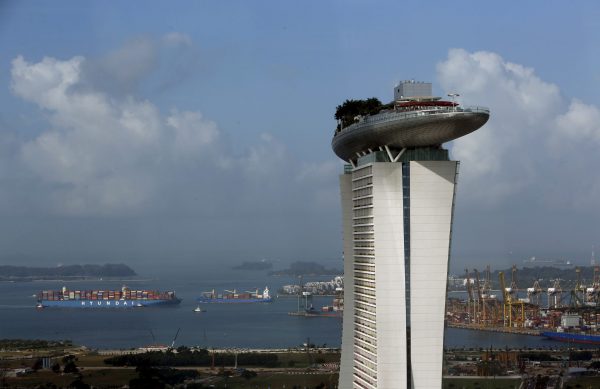The ambitious working plan shows that ASEAN, celebrating its 50th anniversary this year, has the desire and appetite for a bigger role on the global stage.
ASEAN could boost its global role through greater engagement with its external partners. ASEAN’s external trade is worth more than trade between its members. Over the past 15 years, the value of extra-ASEAN trade has consistently tripled that of intra-ASEAN trade. The relative magnitude of external trade may lead some to wonder whether it’s time for ASEAN to pursue a more aggressive trade agenda externally.
ASEAN member states conduct trade negotiations with the ‘ASEAN centrality’ principle in mind. According to the ASEAN Charter, ASEAN centrality serves as the ‘primary driving force in [the organisation] and cooperation with its external partners’.
What does ASEAN centrality mean when it comes to trade? The approach is interpreted as a requirement that any benefits or commitments given in ‘ASEAN+1’ free trade agreements cannot exceed those granted in intra-ASEAN FTAs. Liberalisation measures in ASEAN’s FTAs with Japan or India, for example, are likely to be weaker than those in agreements between ASEAN countries.
This implies that ASEAN’s internal trade agenda has been given higher priority than its external trade agenda. For example, in the intra-ASEAN FTAs, Indonesia allows the establishment of foreign bank offices in all provincial capitals subject to an economic needs test. But in ASEAN+1 FTAs, such as the ASEAN–Australia–New Zealand FTA and the ASEAN–South Korea FTA, banks from partner countries can only set up shop in a limited number of cities.
Looking forward, it will be hard for ASEAN to not seek more intensive engagement with its external partners. ASEAN, home to a rising middle class and nearly 400 million people under the age of 35, is a very attractive region for investors. It should not be surprising that many countries, including the United States under the Trump administration, will seek more intensive engagement with ASEAN including on issues of trade and investment.
ASEAN is also taking a lead role on negotiating what is now the world’s sole megaregional trade deal, the Regional Comprehensive Economic Partnership (RCEP). RCEP’s 16 members account for 46 per cent of the world’s population and 24 per cent of global GDP. The agreement aims to offer better terms on trade in goods, services and investment for ASEAN as well as RCEP’s six extra-regional economies.
In addition to RCEP, ASEAN is looking beyond the Asia Pacific for more intensive engagement in trade. Just last month, ASEAN agreed to revive FTA talks with its second-largest external source of foreign direct investment — the EU — after initial discussions were shelved in 2009.
Given that most of ASEAN’s trade is with countries outside the group, ASEAN should seek to maximise whenever an opportunity arises to negotiate an FTA with its external trading partners. These include the six countries that join ASEAN to form RCEP — Australia, China, India, Japan, New Zealand and South Korea — as well as the EU.
The more FTAs ASEAN has with its trading partners, the more likely ASEAN will become more integrated in global supply chains. Peter Petri and Michael Plummer have argued that limiting external economic relationships to common ASEAN-wide agreements is not necessarily advantageous — it may also constrain the ability of members to maximise gains from trade and investment.
In ASEAN+1 FTAs, market access negotiations with respective trading partners are conducted bilaterally between the partner and each ASEAN member state individually — not with ASEAN as a whole. Thus there is an opportunity for each ASEAN member state to compete with one another to divert trade and investment from the trading partner to their respective countries.
Yet some countries have an incentive to act differently. As the largest country in ASEAN, Indonesia has vast potential as an attractive trade and investment destination. To attract more trade and investment from ASEAN’s trading partners, Indonesia may consider giving them treatment that is better, or at least on the same level, as that given exclusively to the other ASEAN member states.
Significant economic benefits could be reaped from more intensive engagement between ASEAN and its trading partners. Ideally, each ASEAN member state would be tempted to abandon the ‘ASEAN centrality’ concept as it pertains to FTAs, and extend to its trading partners the preferential treatment that under past circumstances would only be given to other ASEAN member states. From a purely economic standpoint, this would no doubt benefit ASEAN through increased extra-ASEAN trade. Such an approach would certainly be in line with ASEAN’s 2017 motto of ‘engaging the world’.
Yet extending the preferential treatment to trading partners in this way is easier said than done. Petri and Plummer note that regional policy concerns often have complex historical, political and cultural roots and can rarely be resolved by economic arguments alone.
A clear pathway exists for ASEAN to reap more trade and investment benefits through expanding its engagement with other countries. But first, ASEAN may need to change the norm that the best terms on trade should be reserved exclusively for other member states. Then ASEAN will be able to maximise the benefits from engaging the world.
Joko Siswanto is an analyst at the Banking Research and Regulation Department, Indonesia Financial Services Authority (OJK)
Alwin Adityo works at the Banking Research and Regulation Department, Indonesia Financial Services Authority (OJK).

